Burns Bees Feeding System
A FEEDING SYSTEM FOR HONEY BEES
CRITICAL TIMES OF THE YEAR TO FEED HONEY BEES
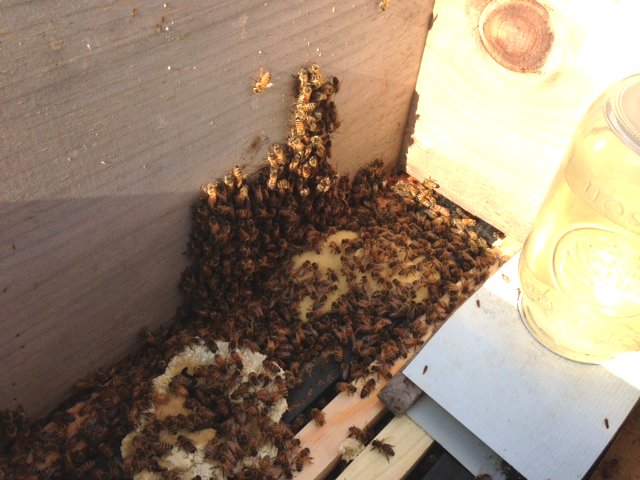
I wish we all could let the bees find their own food sources all year. Sometimes they do. But our country has an obsession with killing weeds. Fence rows are sprayed and edges of mono-crop fields are sprayed or mowed. The bees' natural food sources are quickly eliminated. Those studying Colony Collapse Disorder point toward poor nutrition as one of several potential causes.
A colony actually requires a large amount of food like any living organism. And since a hive is considered a single living organism, its requirement for steady food is enormous. Bees are like us; they live on carbohydrates (nectar/honey) and protein (pollen). Bees are healthier when they are on a healthy diet of pollen and nectar.
There are critical times during the year when bees need food but it is limited. Take for example the installation of a package in the spring. Over the last week here in Illinois packages were unable to forage for food due to rain, wind and colder temperatures. To care for the new brood, large amounts of stored nectar and pollen had to be used. When temperatures fall below 50 degrees (f) the bees cluster to stay warm and are no longer able to go down and eat from the entrance feeders. Resources are consumed in order to produce heat. Less brood is reared and less eggs are laid during cold snaps, thus reducing the building up of brood. There are several reasons why brooding up is so important in the spring and early summer. A colony's large population is essential for gathering nectar, building comb, storing honey and fighting pests and diseases. Weaker colonies usually become weaker which increases the risks of wax moths, small hive beetles and winter die-outs.
Without large numbers of foragers they will not have large amounts of nectar coming in. Without large amounts of nectar, they will not be able to produce large amounts of wax to build comb. Without comb there is no place for the queen to lay.
Since we have placed a colony of honey bees in our hive, on our property and want them to work on our terms, there are critical times during the year when we must feed our bees such as in the spring when it is cooler and rainier. And in late summer during the inevitable dearth period between when summer flowers are done and before fall flowers bloom. In the fall when bees need to store up food for winter but frosts have killed off all foraging sources. No matter how good your bees are, how perfect your queen is, these are critical times to ensure your bees are well fed so their numbers remain strong in preparation for winter and for fighting off pests and diseases.
I recently became overwhelmed with how many beekeepers were finding it difficult to feed their bees both protein and carbohydrates during these critical times. Last year I was at the Eastern Apicultural Society meeting in Pennsylvania when a friend of mine received a call that her bees were starving. This was in late summer during a dearth. She was in a panic to figure out how to quickly get food in the hives. Then, in the winter I was speaking at the Tri-County Beekeepers annual conference in Ohio when another friend and fellow master beekeeper told me how much he liked my Winter-Bee-Kind feeding system, but that I should make one for the summer and fall dearth.
We both discussed how this is one of the more critical times that bees need to continue building up on needed resources in preparation for winter. So it took me a year of trying out different methods and systems to meet this demand. I finally did it! It took several prototypes but I finally developed the Burns Bees Feeding System. So often new beginners call us in a panic saying they just installed their new package but they are worried about the cold nights.
Here's the 411 on why new packages are so stressed that sometimes they never fully recover. People purchase their packages so early, that the new package of bees is stuck in the hive. Snow storms, cold night and a lack of foraging causes the new package to fall behind on brood production. This can persist all through the year. All that is needed is to feed the bees from the top, NOT THE FRONT, so that when your new bees are clustered near the top, they have access to the food they so desperately need to build up fast.
Some people try to place an entrance feeder at the entrance or on the frames of a deep and surround it with a shell of a deep hive body and place a lid on it. This can work if all conditions are right, but the fact that you need to do this means that all conditions are not right. In other words, it is too cold for the bees to go down to the entrance feeder at the opening which means there is way too much heat loss. Heat escapes from the cluster up into the open shell of the hive body. Also the bees need more than just sugar, they also need pollen to keep building up.
So let me give the details the Burns Bees Feeding System. It comes with lids with pre-drilled holes for your small mouth jars. We recommend sugar water mixed 1:1 in the spring and summer and 2:1 (2 parts sugar to 1 part water) in the fall. We discovered last year it is best to add 1 teaspoon of protein powder to your sugar water. This helps gives the bees the protein they need. The board holds in the heat during the spring. In our video and pictures you will see how we recommend the patties are smashed through the screen in order to create more texture so the bees can consume patties more effectively.
Take a look through the follow pictures. Traditionally entrance feeders and patties are placed on top of frames and a shell is placed around the food source.
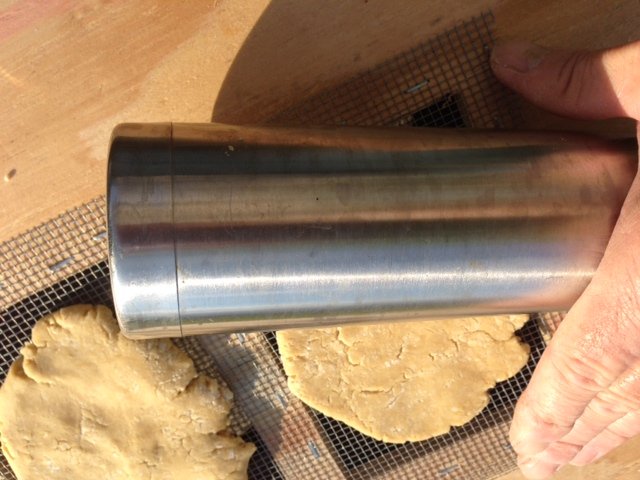
Push your patties through the screen as shown above.
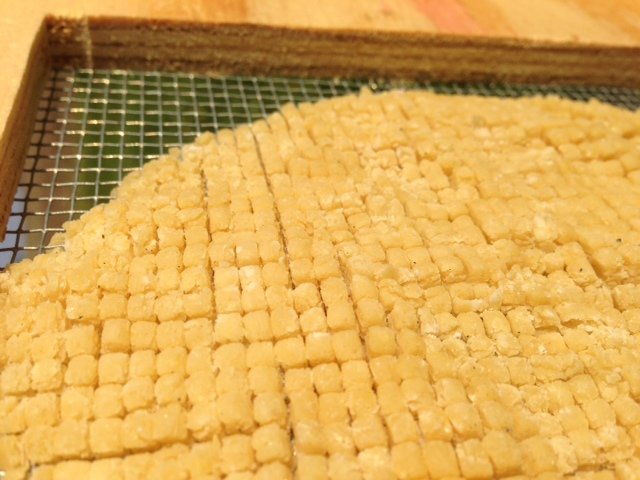 This allows the patty to be cut into tiny attached sections making it easier for the bees to consume, and helps control small hive beetle infestation. This is a view of the patties facing up, but when placed on the hive, the patty pictured above is placed upside down and hangs directly above the cluster.
This allows the patty to be cut into tiny attached sections making it easier for the bees to consume, and helps control small hive beetle infestation. This is a view of the patties facing up, but when placed on the hive, the patty pictured above is placed upside down and hangs directly above the cluster.
 Here is a new package on undrawn foundation. A green drone comb is seen for varroa mite trapping. The Feeding System is placed directly on top of the cluster.
Here is a new package on undrawn foundation. A green drone comb is seen for varroa mite trapping. The Feeding System is placed directly on top of the cluster.
 As pictured above the sugar water is added in the specially cut cap hole. We suggest laying a piece of cardboard or rag over the pollen patties and screen area for maximum heat retention. This is not necessary in temperatures above 50 degrees (f).
As pictured above the sugar water is added in the specially cut cap hole. We suggest laying a piece of cardboard or rag over the pollen patties and screen area for maximum heat retention. This is not necessary in temperatures above 50 degrees (f).
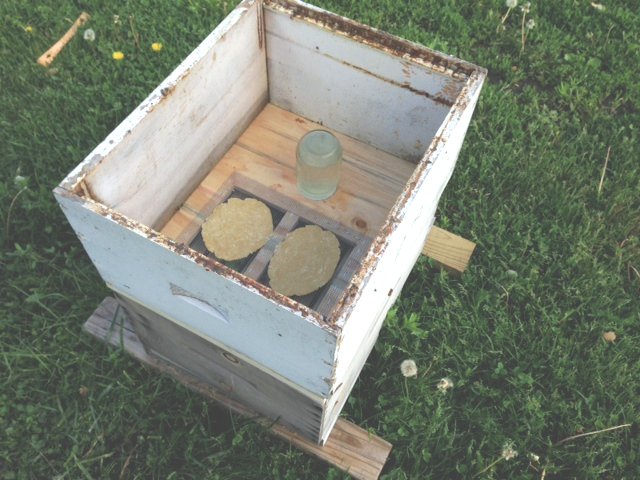
You can use used equipment, like a deep hive body shell to place on the feeding system. The reason you have to do this is because of the jar of sugar water that sticks up. This is not necessary if you are merely wanting to feed a pollen patty in which case you can push it through the screen and then place the top feed on the feeding system without a shell. A shell is to add space for the jar feeder.
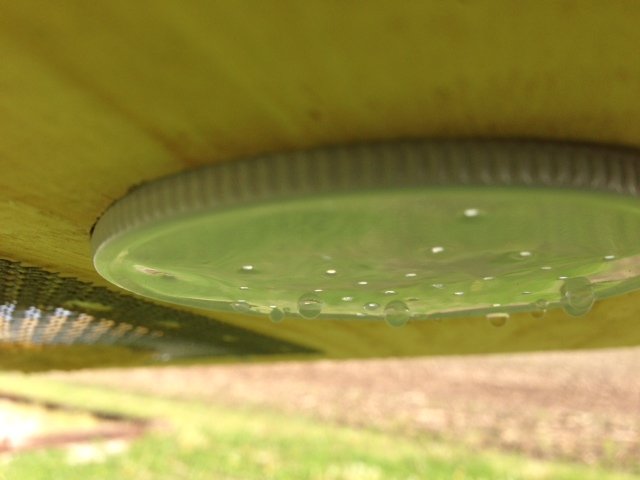 Notice how the jar lid does not allow the sugar water to spill out, but simply bubbles up due to a vacuum seal. The bees are able to drink from this effectively.
Notice how the jar lid does not allow the sugar water to spill out, but simply bubbles up due to a vacuum seal. The bees are able to drink from this effectively.
 Finally place the lid on the system. Be sure a use a weight like a rock or brick incase of a strong wind.
Finally place the lid on the system. Be sure a use a weight like a rock or brick incase of a strong wind.
To order our NEW BURNS BEES FEEDING SYSTEM, click here now. Thank you.